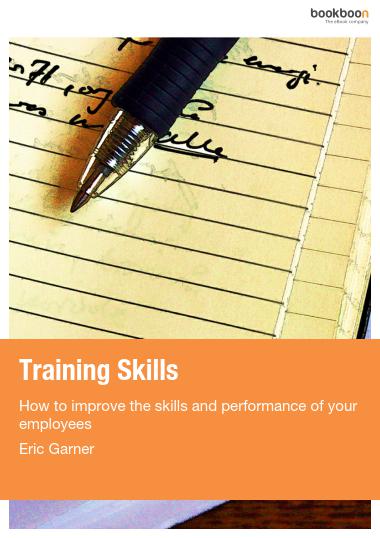Why training is the key to survival and success
Not so long ago, training at work was mostly seen as some kind of reward or punishment. Today’s savvy businesses know that training is an absolutely vital function. There are 3 reasons for this.
First, it is expected. Today’s employees won’t work where they aren’t developed. Whether for personal or professional reasons, people don’t want to be in a business where they are not kept up-to-date, fully trained, and given opportunities to develop.
The second reason is the speed of change. Whether in technology, in products, or in skills, training enables people to keep up to date with the market, the competition, and their own organisation’s plans.
And thirdly, businesses know that people are their most valuable asset. Making the most of this asset is what training is all about. That’s why training skills are essential in the modern business organization. Let’s delve into that topic further.
Training pays
Study after study demonstrates the link between training the workforce and organisational performance:
• A report from the National Economic and Development Office (for the Manpower Services Commission) showed that high-performance companies spent 8.9 days training per person per year against 2.8 days for low-performance companies.
• A study by the Policy Studies Institute found that for individual employees one month of training was worth an additional 6% in pay.
• Xerox, the digital printer and photocopier organisation, has one of the highest spends per head on training: £1600 per person per annum. They aim to have a £6 billion turnover worldwide by the year 2007.
Performance
We can plot people’s performance at work in one of three ways: targets; standards; and competence.
• Targets: Setting someone a target to reach and then measuring whether they reach it or not is one of the simplest ways to judge performance.
• Standards: Standards are levels of performance. They allow us to compare different people’s performance against pre-set levels, such as an average, a high and a low level.
• Competence: Competence is the ability someone has to reach a standard and thereby a target. We can help someone to perform better by working on their skills or by getting them to meet standards and targets.
Updating
We live in times of rapid change. Business and work are now driven by dynamic and constantly changing external factors: global competition, new technology, evolving markets, demand for quality goods and services, changes in attitudes. Whereas in the past, training of employees only took place now and again, – what was sometimes referred to as “sheep-dipping”, – today it is a constant requirement for everyone.
Developing potential
It used to be the case that people only brought to work a limited range of requirements, e.g. in a manual job just their skills. Today, they need to bring everything they can offer, including their talents, ideas, and strengths. The most successful companies do this by developing individuals to their full potential. Developing people’s potential is not just an excellent form of training but good people management.
Important facts about training the workforce
• The key difference between training and other forms of learning is that training results in a change of behaviour.
• The route to changes in performance lies in changes to knowledge, skills and attitudes.
• Studies show that organisations that spend on training are more productive than those that don’t.
• In times of change, it is more important to train people how to learn than in what they should know.
• Individual potential is rarely achieved without some form of training.
• Unlike “Roman Empire” training where people were trained once and left alone, in a changing world people need constant training and re-training.




